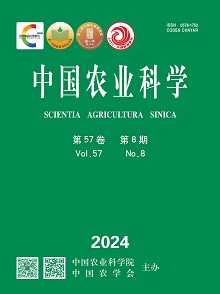【Objective】 The objective of this study was to study the response of important value (IV) and functional traits of dominant species of Leymus chinensis to grazing intensity in meadow steppe and to observe whether Leymus chinensis adapts to changes in the external environment by adjusting its various functional traits (such as plants, stems, leaves and so on) , so as to provide reference for rational grazing utilization of grassland. 【Method】 Six grazing intensities were set by control experiments, including control (G0: 0), mild (G0.23: 0.23 cow.AU/hm 2), light to moderate (G0.34: 0.34 cow.AU/hm2), moderate (G0.46: 0.46 cow.AU/hm2), heavy(G0.69: 0.69 cow.AU/hm2), and extremely very heavy (G0.92: 0.92 cow.AU/hm2), with three replicates. The IV of the dominant species of Leymus chinensis and its plant traits (plant height, stem weight, leaf weight, stem﹕leaf, and plant weight) and leaf traits (morphological traits:leaf area, single leaf weight, specific leaf area (SLA), leaf length, and leaf width; physiological traits: leaf carbon(C) and nitrogen (N) content, and C/N) were determined in each treatment. Among them, IV of Leymus chinensis was obtained by randomly selecting five 1 m×1 m plant community plots in the experiment plots. The functional characteristics of Leymus chinensis were determined by randomly selecting individual Leymus chinensis plants in each experiment plot. 【Result】 (1) Compared with G0, the decrease of Leymus chinensis IV was 42.9%, 66.0%, 82.7%, 91.8%, and 91.2% with the increase of grazing intensity. (2) Leymus chinensis plant traits (plant height, stem weight, leaf weight, and stem﹕leaf) decreased gradually with the increase of grazing intensity. The stem﹕leaf of Leymus chinensis plants was less than 1 in different grazing intensities, and G0.92 was significantly reduced by 39.22% compared with G0. The leaf area, leaf weight, leaf length and leaf width of leaf traits gradually decreased with the increase of grazing intensity. However, the SLA increased with the increase of grazing intensity, and it was the largest at G0.92, with a value of 136.61 cm 2·g-1, which increased 23.7%, 19.0%, 17.8%, 20.2%, and 13.2%, respectively, compared to G0, G0.23, G0.34, G0.46, and G0.69. (3) Leymus chinensis leaves C and N content was 44.2% and 2.8% under extremely heavy grazing (G0.92), respectively. With the increase of grazing intensity, the overall change of Leymus chinensis leaves C content was relatively stable, but leaves N content increased continuously. Compared with G0, the Leymus chinensis leaves N content in G0.69 and G0.92 increased by 21.8% and 43.2%, respectively. (4) Correlation analysis showed that Leymus chinensis leaves SLA was a significant positive correlation with N content and a significant negative correlation with C content. The leaf morphological traits were significantly correlated with physiological traits, the morphological traits were mainly with single leaf weight, and the physiological traits were mainly with C/N. 【Conclusion】 The grazing intensity changed the dominance of Leymus chinensis and made the individual Leymus chinensis plants smaller, reduced stem: leaf, but Leymus chinensis changed the leaves SLA and N content in response to changes in the external environment. Especially under extremely heavy grazing conditions, the SLA and N content increased synergistically.











